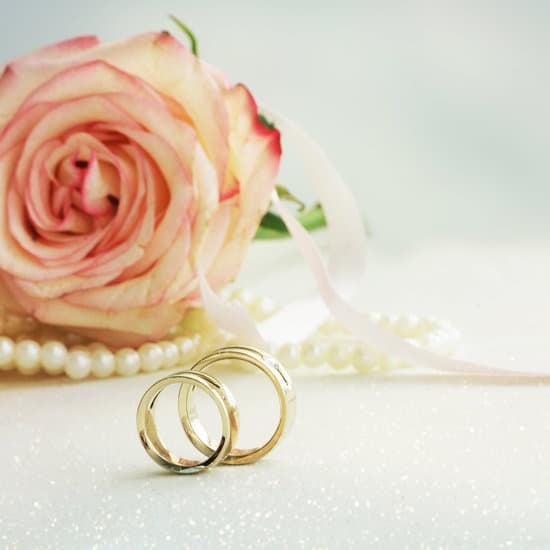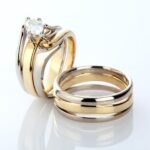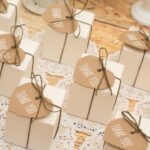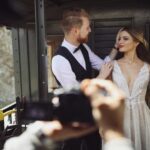What do people wear to weddings? The choice of outfit for a wedding is not just a matter of personal style, but also reflects the formality and cultural aspects of the event. Whether it’s a traditional ceremony, a modern affair, or a destination wedding, selecting the right attire is essential. This article will delve into the diverse dress codes and fashion options for wedding guests, providing insights into both traditional and contemporary wedding attire choices.
Weddings are steeped in tradition and cultural significance, often influencing the dress code for attendees. The first section of this article will explore the traditional wedding attire across different cultures and regions, shedding light on specific examples and their symbolic meanings. Understanding these traditional dress codes not only shows respect for the couple and their families but also adds a rich layer of cultural appreciation to the celebration.
In contrast to traditional attire, contemporary weddings have embraced modern trends and variations in fashion. The following section will discuss the evolving landscape of wedding attire, from formal to semi-formal options for both men and women. With changing notions of style and fashion, it’s important for guests to adapt their outfits accordingly while still adhering to appropriate dress codes. This comprehensive guide aims to help readers navigate through these sartorial choices with confidence.
Traditional Wedding Attire
When it comes to weddings, traditional attire plays a significant role in reflecting the cultural heritage and customs of different regions. From intricate saris in India to elegant hanboks in Korea, traditional wedding attire showcases the richness and diversity of global customs. Here are some examples of traditional wedding attire from around the world:
- India: In India, traditional wedding attire varies by region, with brides often wearing vibrant sarees or lehengas adorned with intricate embroidery and embellishments. Grooms typically opt for sherwanis or kurta pajamas paired with turbans or other traditional headwear.
- China: Chinese brides traditionally wear a qipao or cheongsam, a form-fitting dress that symbolizes modesty and beauty. The color red is often chosen for its auspicious meaning, while grooms may wear a changshan or other formal attire.
- Nigeria: Nigerian weddings are known for their colorful and elaborate traditional attire, such as the Yoruba’s Aso-Oke fabric worn by both bride and groom in richly patterned designs.
Understanding the significance of traditional wedding attire is essential when attending multicultural weddings. It not only shows respect for the couple’s heritage but also adds to the overall experience of celebrating love across different cultures.
Whether it’s a grand Indian wedding or an intimate Korean ceremony, embracing diverse traditional wedding attire allows guests to fully immerse themselves in the beauty of cultural customs and traditions. Ultimately, understanding and appreciating these unique dress codes enriches the experience of attending weddings from around the world.
Contemporary Wedding Attire
When it comes to contemporary wedding attire, the options for both men and women have expanded dramatically in recent years. For men, there are now many alternatives to the traditional tuxedo or suit, with casual elegance becoming more acceptable. This can include tailored pants paired with a stylish blazer or even a well-fitted vest worn over a crisp dress shirt. In terms of footwear, loafers and dress shoes are popular choices, depending on the formality of the event.
As for women’s contemporary wedding attire, the range is even wider. While elegant dresses remain a classic choice, jumpsuits and separates have become increasingly popular for those seeking a modern twist on traditional wedding attire. This can be paired with statement jewelry and stylish heels to create a fashionable yet sophisticated look. The key is to strike a balance between staying true to the formality of the event while also reflecting one’s personal style.
The rise of contemporary wedding attire has allowed wedding guests to express their individuality while still respecting the ceremonial nature of weddings. From unconventional color choices to non-traditional silhouettes, there is now more freedom than ever when it comes to choosing what to wear to weddings. Ultimately, the most important consideration is to find an outfit that makes you feel comfortable and confident while adhering to any specific dress codes set by the couple.
Dress Code Etiquette
When it comes to attending a wedding, understanding and adhering to the dress code is crucial. Each dress code conveys a specific level of formality and sets the tone for the event. It’s essential to interpret these codes correctly to ensure that you are appropriately dressed for the occasion. Let’s delve into some common wedding dress codes and how to navigate them.
Black-Tie Affairs
For black-tie weddings, men are expected to wear tuxedos with a formal bow tie, while women should opt for floor-length gowns or elegant cocktail dresses. Black-tie events call for sophistication and glamour, so choose attire that exudes timeless elegance.
Cocktail Dress Code
Cocktail attire allows for more flexibility while still maintaining a sense of formality. Men can opt for dark suits paired with dress shirts and ties, while women have the freedom to wear knee-length or midi dresses. Cocktail attire strikes the perfect balance between formal and relaxed, making it suitable for various wedding styles.
Casual and Beach Attire
Casual and beach weddings embrace a more laid-back atmosphere. Men can opt for dress pants or khakis paired with collared shirts, while women can choose light, flowy dresses or separates. Footwear should be comfortable yet stylish, such as loafers or sandals for men and flats or wedges for women.
Understanding what to wear to weddings requires careful consideration of the dress code in order to show respect for the couple getting married and honor the significance of the event. By following these guidelines, guests can ensure that they are dressed appropriately according to the specified dress code.
Wedding Attire for Men
When it comes to attending a wedding, choosing the right attire is crucial for men. Understanding the different options and styling tips can help navigate the sometimes confusing world of wedding dress codes.
Formal Options: Suits and Tuxedos
For traditional or formal weddings, men typically opt for suits or tuxedos. A well-fitted suit in classic colors like black, navy, or charcoal is a timeless choice, while a tuxedo brings an extra level of sophistication, especially for black-tie events. When selecting a suit or tuxedo, pay attention to the fit and ensure that it complements your body type.
Accessories and Footwear
Accessorizing appropriately is key to completing the wedding look. For formal events, consider adding a tie, bowtie, cufflinks, and a pocket square to elevate your outfit. Additionally, investing in high-quality dress shoes that match the formality of your attire is essential. Opt for oxfords or derbies in leather materials for a polished finish.
Style Tips and Visual Examples
When deciding on wedding attire, consider the venue and time of day to gauge the appropriate level of formality. For instance, outdoor daytime weddings may call for lighter colored suits in breathable fabrics like linen or cotton. Moreover, visual examples from fashion magazines or online sources can provide inspiration on how to put together stylish wedding looks.
Understanding these options and recommendations can help men choose the perfect attire for any wedding they attend. By paying attention to details such as fit, accessories, and style tips, men can confidently showcase their sartorial elegance while respecting the formality of the occasion.
Wedding Attire for Women
When it comes to attending a wedding, women have a wide range of outfit choices, each reflecting their personal style and the formality of the event. From elegant dresses to jumpsuits, the options are diverse and versatile. For a formal evening wedding, a floor-length gown in a rich fabric such as silk or satin would be an elegant choice.
Many women opt for classic black attire, but jewel tones or metallic hues can also make a statement. When choosing a dress for a daytime wedding, lighter and brighter colors are often preferred, along with floral patterns and lighter fabrics like chiffon or lace.
In recent years, jumpsuits have become increasingly popular as an alternative to traditional dresses for weddings. A tailored jumpsuit can be both chic and comfortable, making it perfect for dancing the night away at the reception. Pairing it with statement earrings and stylish heels can elevate the look to fit more formal occasions. Additionally, separates such as a skirt and blouse or dressy trousers paired with an embellished top can offer a fresh take on wedding attire.
Coordinating accessories and hairstyles play an important role in completing the overall look for weddings. When it comes to accessories, timeless pieces like pearl earrings or a simple pendant necklace are often go-to choices for many women.
However, statement jewelry pieces like chandelier earrings or cuff bracelets can add glamour to an outfit as well. As for hairstyles, depending on personal preference and dress style women can opt for loose curls, sleek updos or bohemian braids to complement their ensemble.
Ultimately, what women choose to wear to weddings is a way of expressing themselves while also adhering to the formality of the event – whether that means donning an elegant gown or confidently rocking a stylish jumpsuit. By carefully selecting coordinating accessories and hairstyles, they can create a polished and put-together appearance that celebrates the joyous occasion while being true to their personal style preferences.
What Not to Wear
When attending a wedding, it is crucial to adhere to certain dress codes to show respect for the couple and the importance of the event. One of the most common fashion faux pas to avoid when choosing an outfit for a wedding is opting for overly casual attire. This includes wearing jeans, shorts, or t-shirts, which are generally not suitable for such formal occasions. Instead, guests should opt for more elegant and refined options.
Another fashion mistake to steer clear of is wearing flashy colors that may draw attention away from the bride and groom. While it’s acceptable to wear vibrant hues at certain events, weddings are not the appropriate venue for loud and eye-catching outfits. It’s best to choose more subdued tones or classic neutrals that won’t steal the spotlight from the newlyweds.
Finally, it’s important to mention inappropriate attire as another critical aspect of what not to wear to a wedding. This can encompass a variety of clothing choices, including anything too revealing or provocative, overly casual footwear like sneakers or flip flops, or outfits that may be considered offensive due to cultural insensitivity.
Considering all these factors when selecting an outfit for a wedding will ensure that guests stay in line with respectful dress code etiquette while celebrating the joyous occasion with their loved ones.
| Fashion Faux Pas | Description |
|---|---|
| Overly Casual Attire | Avoid wearing jeans, shorts, or t-shirts. |
| Flashy Colors | Avoid attention-grabbing hues that may distract from the couple. |
| Inappropriate Attire | Avoid revealing or culturally insensitive clothing choices. |
Personal Stories and Tips
In conclusion, what to wear to weddings is a dilemma that many people face when they receive an invitation. The choice of outfit for a wedding is not only a reflection of personal style but also a sign of respect for the event and its cultural or formal aspects. Whether it’s traditional attire steeped in cultural significance or modern trends with contemporary flair, finding the right balance between personal style and wedding dress code etiquette is essential.
Personal stories and tips from wedding guests, fashion experts, and wedding professionals can provide invaluable insight and inspiration for choosing the perfect outfit for any wedding. Real-life experiences shared by others who have navigated the intricate world of wedding attire can offer practical guidance on what works best for different types of ceremonies, venues, and cultural customs.
Additionally, advice from fashion experts and wedding professionals can serve as a valuable resource for understanding dress codes, coordinating accessories, selecting appropriate hairstyles, and avoiding common fashion faux pas.
Ultimately, whether attending a traditional wedding steeped in cultural rituals or a contemporary celebration with modern sensibilities, finding the right outfit involves understanding the formality and cultural context of the event while expressing individual style. By incorporating insights from personal stories, tips from fashion experts, and advice from wedding professionals, guests can feel confident in their sartorial choices while honoring the significance of the occasion through their attire.
Frequently Asked Questions
What Is Normal to Wear to a Wedding?
The appropriate attire for a wedding can vary depending on the formality of the event. For men, a suit and tie or dress pants and a sport coat are common choices. Women often opt for cocktail dresses or formal evening gowns for more formal weddings.
What Dress Do You Wear to a Wedding as a Guest?
As a wedding guest, it’s important to choose an outfit that is respectful of the couple’s special day. For women, a chic cocktail dress or a dressy separates such as a skirt and blouse are both great options. Men can go for a suit with a dress shirt and tie, or dress pants with a blazer.
What Is an Appropriate Color to Wear to a Wedding?
When selecting an outfit to wear to a wedding, it’s best to avoid wearing white or anything that might overshadow the bride. It’s also considered courteous not to wear black unless the wedding invitation specifically states “black-tie” optional. Opting for pastel colors, bold jewel tones, or earthy shades can be more suitable for wedding attire.

I have been involved in marriages for over 20 years helping couples and singles understand more about them.





